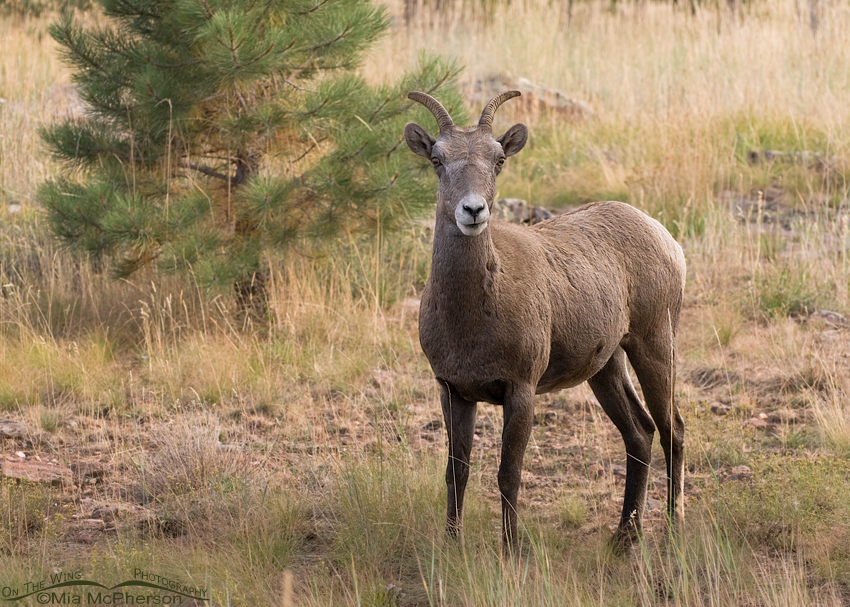 Alert Bighorn Sheep (Ovis canadensis) ewe – Nikon D200, handheld, f6.3, 1/250, ISO 320, Nikkor 70-300mm VR at 110mm, natural light, not baited
Alert Bighorn Sheep (Ovis canadensis) ewe – Nikon D200, handheld, f6.3, 1/250, ISO 320, Nikkor 70-300mm VR at 110mm, natural light, not baited
I went on my first camping trip to Flaming Gorge National Recreation area from the 18th through the 22nd of September and was awe inspired, dumbstruck and thoroughly amazed by the beauty found there. The gorgeous vistas, flaming red rocks, mountains, valleys, stunning water views and the abundant wildlife made me dizzy with joy.
Spending the first two nights high up in the mountains of the Ashley National Forest was wonderful. There were warm temperatures during the day and brisk nights plus it was only a short walk to the edge of the cliffs that overlooked the deep blue water below. There were pungent aromas from the sagebrush and pines found there, the sound of the wind blowing through the golden grasses, the sounds of Northern Flickers and Clark’s Nutcrackers, Turkey Vultures riding on the warm current of the cliffs and to my happiness, Bighorn Sheep often wandered through the camping areas. I’ve only photographed Bighorn Sheep (Mountain Sheep some people call them) a few times and here they were, calmly foraging close to where I was! I was thrilled and excited. Okay, I was way beyond that but I was and am trying to be calm about it!
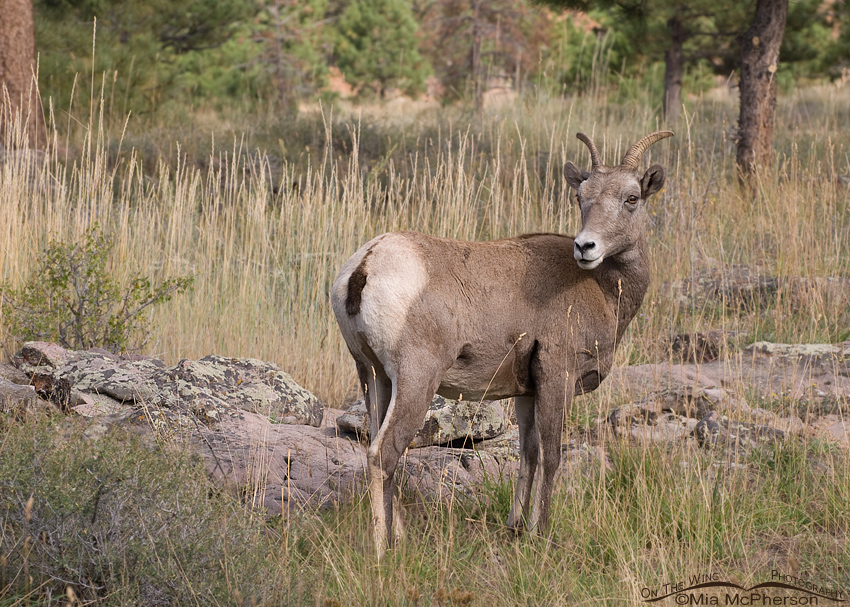 Bighorn Sheep ewe – Nikon D200, handheld, f9, 1/250, ISO 320, Nikkor 70-300mm VR at 125mm, natural light, not baited
Bighorn Sheep ewe – Nikon D200, handheld, f9, 1/250, ISO 320, Nikkor 70-300mm VR at 125mm, natural light, not baited
After wandering around looking for birds while heading back to the campsite we found a small flock of ewes and their young eating very close to camp. They were so close to the road that I had to put down my D300 with the 200-400mm VR attached and use the backup D200 that had the 70-300mm VR on it. I carry three DSLR’s for trips like this one, the other D200 has an 18-200mm VR on it for landscapes.
These Bighorn Sheep weren’t skittish at all, in fact I was concerned a few times at the campsite when they would approach me too close for my comfort. When they came into the campsite while I was outside I often moved so that the wooden picnic table was between the sheep and myself.
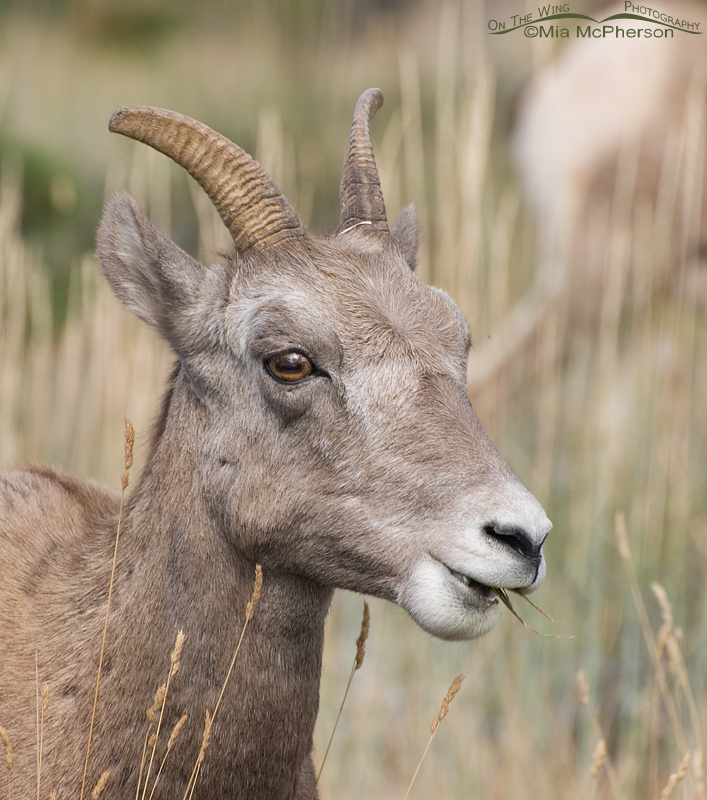 Portrait of a Bighorn Sheep ewe – Nikon D200, handheld, f8, 1/125, ISO 320, +0.3 EV, Nikkor 70-300mm VR at 300mm, natural light, not baited
Portrait of a Bighorn Sheep ewe – Nikon D200, handheld, f8, 1/125, ISO 320, +0.3 EV, Nikkor 70-300mm VR at 300mm, natural light, not baited
I find the eyes of Bighorn Sheep fascinating, they do not have round pupils, what they have is more of an elongated oval-shaped pupil that goes from side to side, their eyes look slightly eerie but yet very interesting.
There were no rams nearby and the Bighorn Sheep ewes and young seemed to feed peacefully in a group for the most part. I did see two of the ewes challenge each other a bit by standing on their back legs, front legs dangling or striking out and while they did make movement that indicated that they might have a go at butting their heads together though it never came to that.
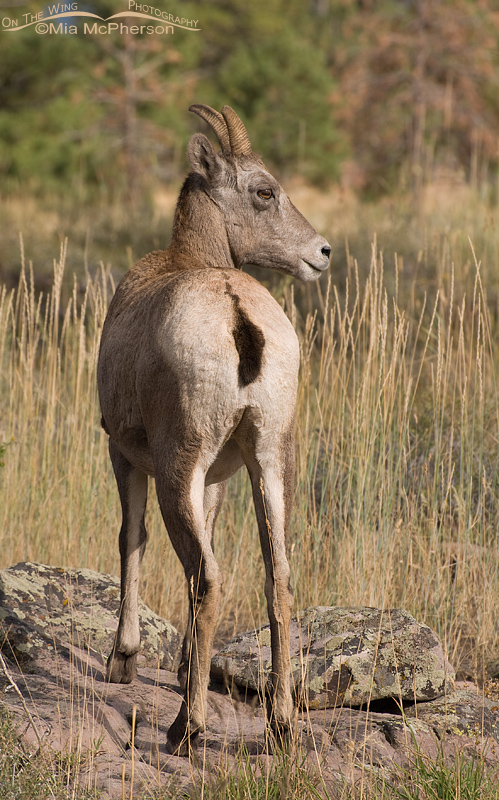 Back View of a Bighorn Sheep ewe – Nikon D200, handheld, f9, 1/500, ISO 320, Nikkor 70-300mm VR at 220mm, natural light, not baited
Back View of a Bighorn Sheep ewe – Nikon D200, handheld, f9, 1/500, ISO 320, Nikkor 70-300mm VR at 220mm, natural light, not baited
Bighorn Sheep used to number in the millions but by the 1900’s their numbers had dwindled so low from competition by domesticated sheep, hunting and diseases that the estimated population was just several thousand and at that time there were concerns about their possible extinction. In 1936 the Arizona Boy Scouts mounted a state-wide campaign to save the sheep and before long other organizations followed. There is more information on that here.
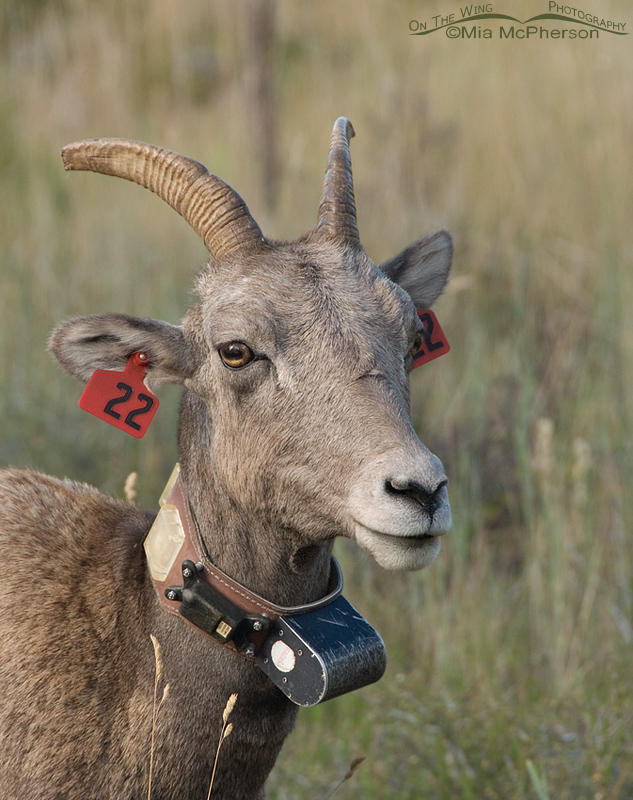 Radio-collared and tagged Bighorn Sheep ewe – Nikon D200, handheld, f7.1, 1/125, ISO 400, Nikkor 18-200mm VR at 200mm, natural light, not baited
Radio-collared and tagged Bighorn Sheep ewe – Nikon D200, handheld, f7.1, 1/125, ISO 400, Nikkor 18-200mm VR at 200mm, natural light, not baited
Among the flocks of ewes and lambs that I saw in two different locations there were a number of ewes that had been tagged and radio-collared. While I don’t find that “jewelry” very appealing in my images I do appreciate the fact that through studying the tagged and collard sheep scientist may be able to help and ensure the survival of these beautiful wild animals. Thanks for your help Red #22!
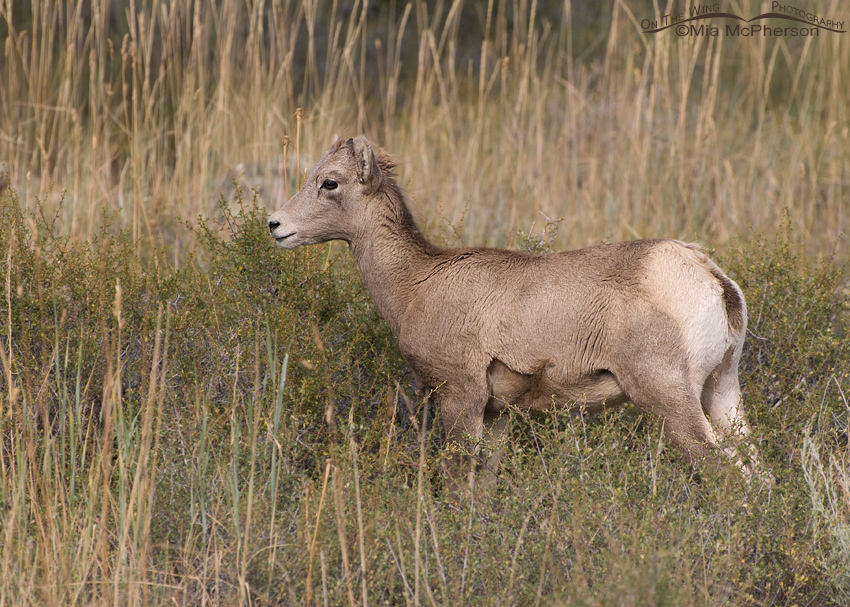 Young Bighorn Sheep – Nikon D200, handheld, f8, 1/250, ISO 320, Nikkor 70-300mm VR at 240mm, natural light, not baited
Young Bighorn Sheep – Nikon D200, handheld, f8, 1/250, ISO 320, Nikkor 70-300mm VR at 240mm, natural light, not baited
I’m not sure at what age we should stop calling baby Bighorn Sheep “lambs” and start calling them “young”, but since this is late in the year I have been calling this a young Bighorn Sheep, they are the future of this species and I hope they will be able to overcome the obstacles that nature presents them with and the ones that we; as humans, have caused or introduced. I can not imagine North America without the Bighorn Sheep!
Life is good.
Mia
Click here to see more of my Bighorn Sheep photos.


Those eyes are really interesting. I have never seen a bighorn sheep, but look forward to it!
Very cool!